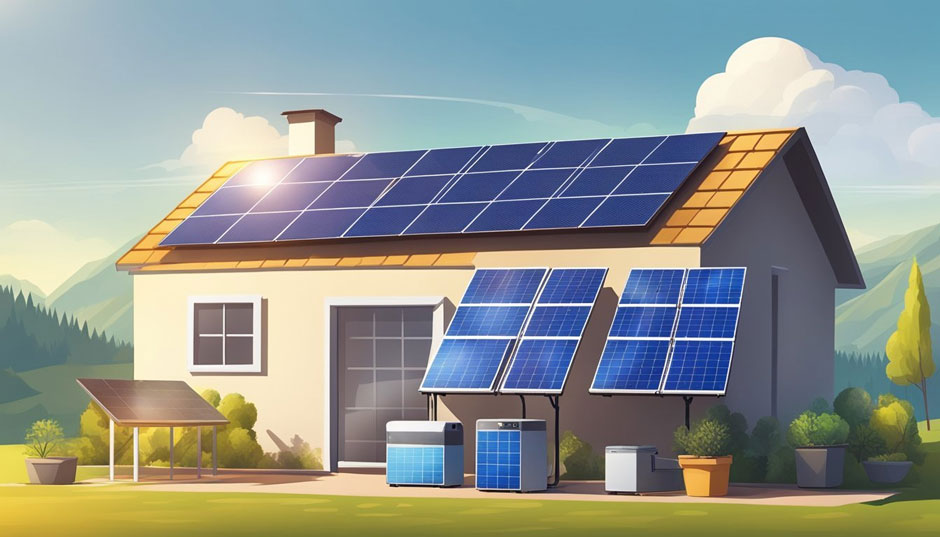
In a world increasingly dependent on modern conveniences, a quiet revolution is taking place. Across rural properties and backyard farms, homesteaders are embracing a simpler, more self-reliant way of life. At the heart of this lifestyle is the desire for independence, growing your food, building your structures, and producing your power. Off-grid solar energy isn’t just a trendy upgrade; it’s a cornerstone of true sustainability. With the right planning and tools, you can harness the power of the sun to fuel your homestead quietly, cleanly, and confidently.
Why Go Solar? The Benefits of Off-Grid Living
Going off-grid with solar energy offers more than just a financial break from rising utility bills it provides freedom and peace of mind. Homesteaders often live in rural or semi-remote areas where grid access can be limited, unreliable, or expensive to connect. Solar panels make it possible to generate electricity anywhere, without depending on a centralized power grid.
In addition to economic advantages, solar energy helps reduce your environmental footprint. By utilizing a renewable resource, you minimize reliance on fossil fuels and decrease harmful emissions. Beyond the technical and ecological perks, there’s also a psychological benefit: the empowering sense of control over your energy production and daily consumption habits. In short, off-grid solar enables a lifestyle that is financially smart, ecologically sound, and rooted in independence.
Understanding Off-Grid Solar: How It All Works
Off-grid solar systems are designed to operate independently from the public utility grid. Unlike grid-tied systems, which feed excess power back into a municipal system, off-grid setups store energy for exclusive on-site use.
To get started, it’s essential to understand the key components of an off-grid solar system:
- Solar panels collect sunlight and convert it into electricity.
- A charge controller regulates the voltage and current going into your battery bank, preventing overcharging.
- The battery bank stores the electricity for use during non-sunny hours (like nighttime or cloudy days).
- An inverter converts the stored DC power into AC electricity, which is used by most household appliances.
These elements work in tandem to deliver consistent, renewable energy throughout the day and night. If you’re just starting and want a better idea of what’s available, check out off-grid solar power systems at Powertec Solar for reliable and scalable solutions tailored to different homestead sizes and energy needs.
Planning Your Solar System: Key Considerations
Before you purchase a single panel, it’s crucial to assess your energy needs. Consider the appliances and tools you’ll be using daily, such as water pumps, lighting, refrigerators, and electric fencing. Add up their wattage and calculate your estimated daily usage.
Next, evaluate your property. Is your roof well-positioned to receive sunlight throughout the day? Do you have open land where a ground-mounted system could be more efficient? How do seasons and weather patterns affect solar exposure? Understanding these factors helps you determine the number of panels and size of battery bank you’ll need.
Don’t forget scalability. Many homesteaders start small, then expand their energy systems as their needs grow. A well-designed off-grid solar system should allow for easy upgrades as your lifestyle evolves.
Essential Tools & Equipment for the DIY Homesteader
Installing and maintaining your solar setup doesn’t require a professional if you’re willing to learn and invest in the right tools. Every hands-on homesteader should have a few key items in their tool arsenal:
- A multimeter for testing voltage, current, and continuity.
- A high-powered cordless drill with proper bits for installing panel brackets.
- Wire strippers, crimpers, and connectors for safe and efficient wiring.
- Safety gear, including gloves, goggles, and a harness for roof work.
- A ladder, level, and sturdy mounting system appropriate for your terrain.
Your toolkit doesn’t stop at installation. Maintaining a solar-powered homestead also means being ready for all sorts of DIY projects, whether you’re building a barn door, sanding a chicken coop, or restoring reclaimed furniture. For all of these, dependable tools are a must. Explore quality sanding tools from Star Building Materials to round out your homesteading workspace.
Common Mistakes to Avoid When Going Off-Grid
Many homesteaders make preventable mistakes early in their solar journey. One of the most common is underestimating energy usage. Make sure your estimates include seasonal tools and appliances, and add a buffer for unexpected growth.
Another pitfall is poor battery maintenance. Failing to monitor battery health and charge levels can significantly shorten their lifespan. Additionally, some overlook the effects of shading from trees or nearby buildings, or don’t plan for reduced sun exposure during winter months.
Quality matters too. Cutting corners with cheap components or DIYing without adequate research can lead to inefficiency or worse, safety hazards. Finally, always have a contingency plan. A small backup generator or secondary energy source can be a lifesaver in emergencies.
The Long-Term Payoff: Cost, Durability & Freedom
While the upfront costs of an off-grid solar system can feel daunting, the long-term savings are substantial. Once installed, your energy is essentially free. Over the years, solar panels require little maintenance and have lifespans of 25 years or more.
Your battery system will need replacement after 5–15 years, depending on the type and care, but modern lithium batteries are making great strides in longevity and efficiency. More importantly, the investment goes beyond dollars saved; it’s about freedom. With solar power, you aren’t dependent on outside forces to keep your lights on and food fresh.
Many homesteaders find that their systems not only meet their current needs but also empower future expansions, such as electric vehicle charging, workshop tools, or irrigation systems.
Conclusion: A Brighter, Self-Reliant Future
Off-grid solar is more than just an energy choice; it’s a commitment to a sustainable, independent lifestyle. Whether you’re just beginning your homesteading journey or upgrading your current setup, solar power puts control and peace of mind back in your hands.
With a thoughtful approach, the right tools, and a bit of grit, you can harness the sun to build a brighter, more resilient future one watt, one tool, and one day at a time.
